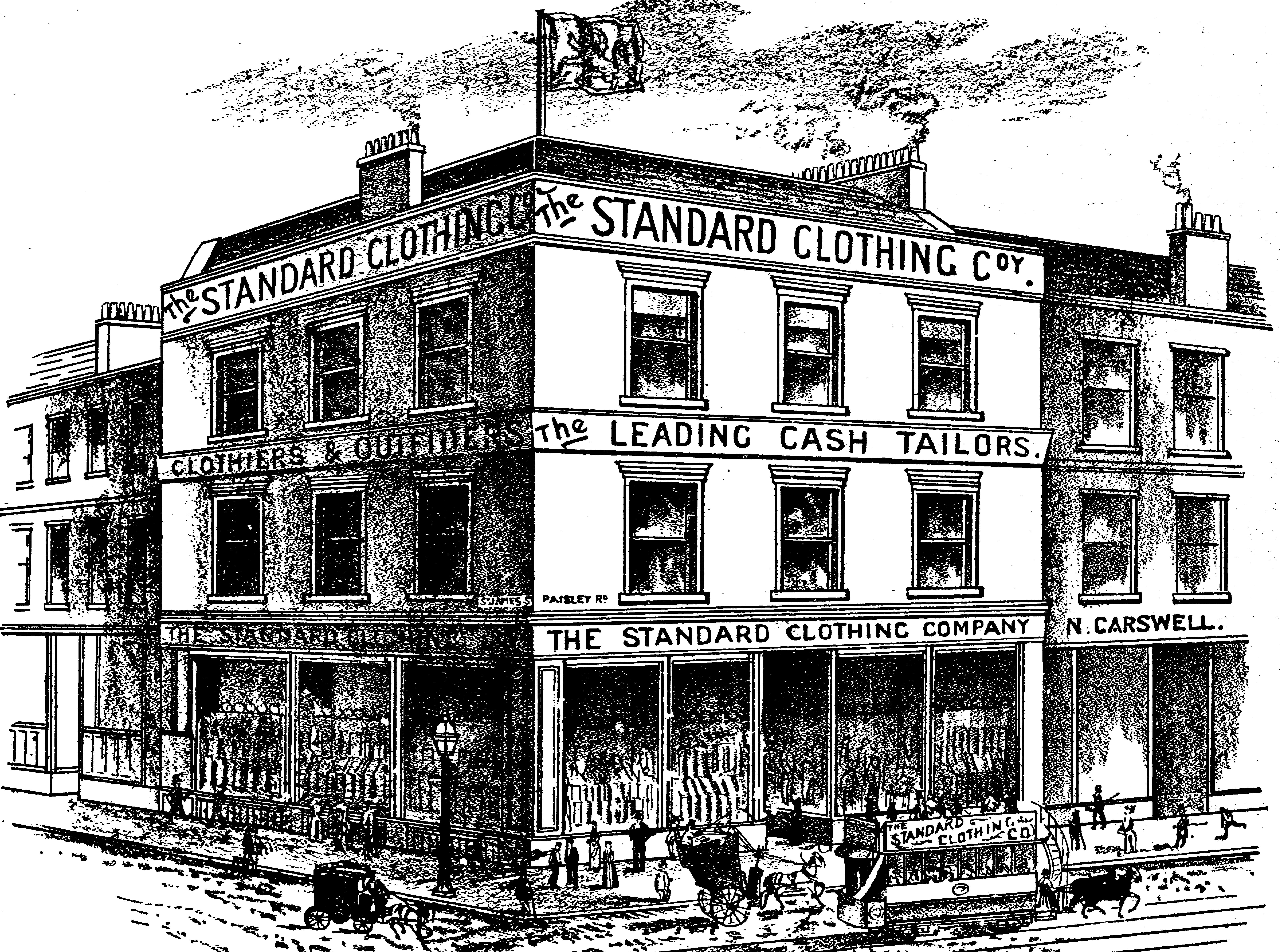
The Standard Clothing Company
THE STANDARD CLOTHING Co., 447 and 449, Paisley Road (Car Terminus), Glasgow.
Amongst the recent additions to the ranks of leading commercial undertakings in this great industrial centre, we have pleasure in directing the attention of our readers to the magnificent establishment opened last February by the Standard Clothing Company, and which, from the magnitude and importance of its operations, and the enterprise and spirit with which it is conducted, fully merits prominent recognition in these records of mercantile progress.

The Company Dawson and McNicoll of Sauchiehall Street, the great West-end clothiers, selected as the site of their business operations the commanding and central position directly opposite the car terminus, and forming the junction of Paisley Road and St. James Street, the Glasgow Car Terminus, and localised by its near proximity to that historical land-mark the Old Toll House. The establishment comprises a splendid building with immense plate-glass frontage of lofty proportions, the windows, nine in number, forming a special feature in the architectural design, and are noteworthy as the largest in Scotland. In these, advantage is taken for the attractive display of the high-class stock, each of the windows being very effectively arranged with goods from the various representative departments of the house.
The interior is elegantly decorated and appointed, the walls being surrounded with panels and pillars having beautifully-framed mirrors between, the whole of the work having been executed regardless of outlay, and presenting a most recherché effect. The departments confined to the first floor are the bespoke tailoring, hosiery, and mercery, and here the visitor may inspect one of the largest stocks of Scotch, English, Irish, Harris, and home-spun tweeds in the Kingdom ; and an immense variety of superior quality hosiery and mercery. A broad handsome staircase introduces us to the second floor, which is stacked from floor to ceiling with the largest and finest assortment of the latest and most stylish novelties in mens, youths, and boys ready-made clothing, girls sailor costumes and reefers, ever offered to the British public. The upper floor is utilised as cutting and work-rooms airy and well-ventilated apartments in every way adapted to the various processes of manufacture under the most perfect and healthful sanitary conditions. The cutting department is conducted by first-class professors of the sartorial art, whose experience, gained in the leading London houses, ensures perfection in fit, style, material, and workmanship in every garment supplied by the firm. The establishment is lighted throughout with Siemans patent light, presenting a most brilliant appearance when fully lit, and forming a strong attraction to the thousands who throng this busy thoroughfare.
During the first period of its establishment the business
has been abnormally successful, as is evidenced by the fact that, on the opening
day, they had to put on the gates, so great was the rush, which will afford our
readers some indication of the magnitude of the trade, and which has never
before been equalled at any similar establishment in the Kingdom. The business
is of a brisk, pushing character, the proprietors evincing their determination
to secure the support of all classes of the public by their unequalled quality
of goods and remarkably reasonable cash prices, a system of trading so obviously
to the benefit of the purchaser that it needs
no special recommendation from us to entitle it to the consideration of our
readers.
The company employ the services of a small army of courteous and attentive assistants, work-people, &c., in the various departments, which are ably conducted under the management of the establishment in Sauchiehall Street via Dawson and McNicoll, the leading and popular West-end tailors and outfitters a sufficient voucher for perfection in every detail of the administration of this great and deservedly prosperous and widely patronised commercial enterprise.
Back to Index of Firms (1891)